
How to Design a Kid-Friendly Garden That’s Actually Stylish
This design duo turned a basic backyard into an interactive paradise for play.
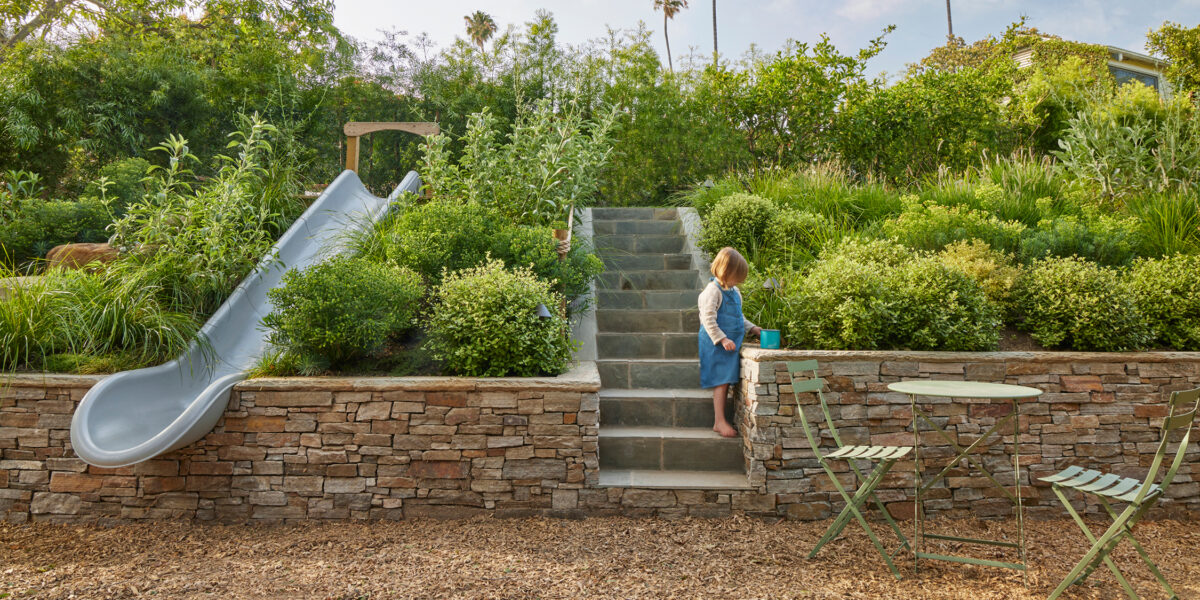
When you think about kid-friendly play spaces, you might have a vision of faded plastic slides and a mishmash of objects that tend to scream loudly of clutter. Unfortunately, a sophisticated landscape that seamlessly becomes one with the surroundings is not the first thing that comes to mind. Trust me, as a mom with a 4-year-old I know the struggle is real, but Sara Brunelle and Katie Smith of Lu — La Studio are changing the way we think about these play spaces. In fact, it’s their main design focus with their studio name being short for Ludic Landscape (“ludic” meaning play).
In their debut West Coast project, Sara and Katie were tasked with creating a backyard space in Santa Monica for two young girls to run, climb, hide, and explore. Together they created layers of plants and climbable structures that pull together an organic play experience that is as fabulous as it is functional. A slide, climber, scramble, and discovery path are all part of the mix along with a rich, wild garden. By using choice plantings to knit the space together, it elegantly holds a multifaceted outdoor space that everyone in the family can enjoy. Every element in this space is an invitation to interact no matter your age.
Looking to add a bit of interactive enjoyment to your outdoor space? No kids necessary, because these tips below are perfect for pet parents and grown people alike. Here’s to adding a little curiosity and moving our bodies more when we step outside our doors.
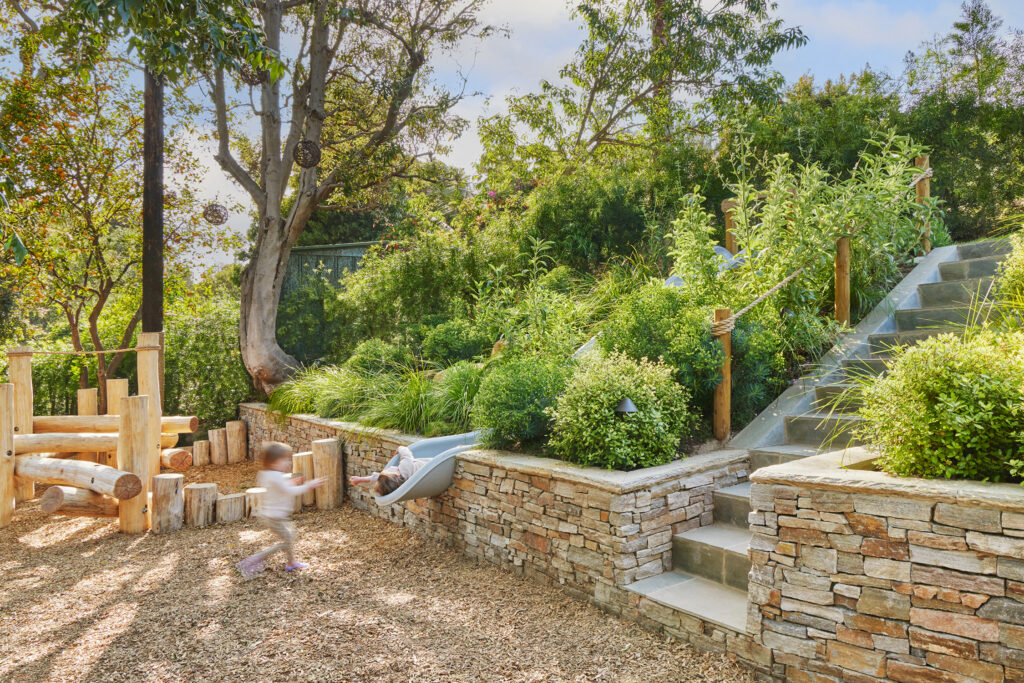
Caitlin Atkinson
1. Create Separate Spaces
Lu — La Studio believes play should be integrated into the landscape and that plants are the perfect tool to build those outdoor rooms. Think of a low pruned hedge as an entrance leading into a secret space behind a larger shrub with masses of soft textural grasses used as a boundary. When taking height, texture, and color into consideration, plant-defined spaces can feel flowy and less confined.
When it comes to implementing the interactive components, Sara and Katie advise that “play pockets could include a small nook that is used as a ‘house,’ an area with logs or boulders for balance and climbing, and a small stage for dramatic play.” Additionally, these playful pockets should be connected by a circuit of paths that offer children choice on how to explore a space. When it comes to materials, the team tends to use clusters of plants intermingled with logs as a way to transition into different zones or whenever ground materials change.
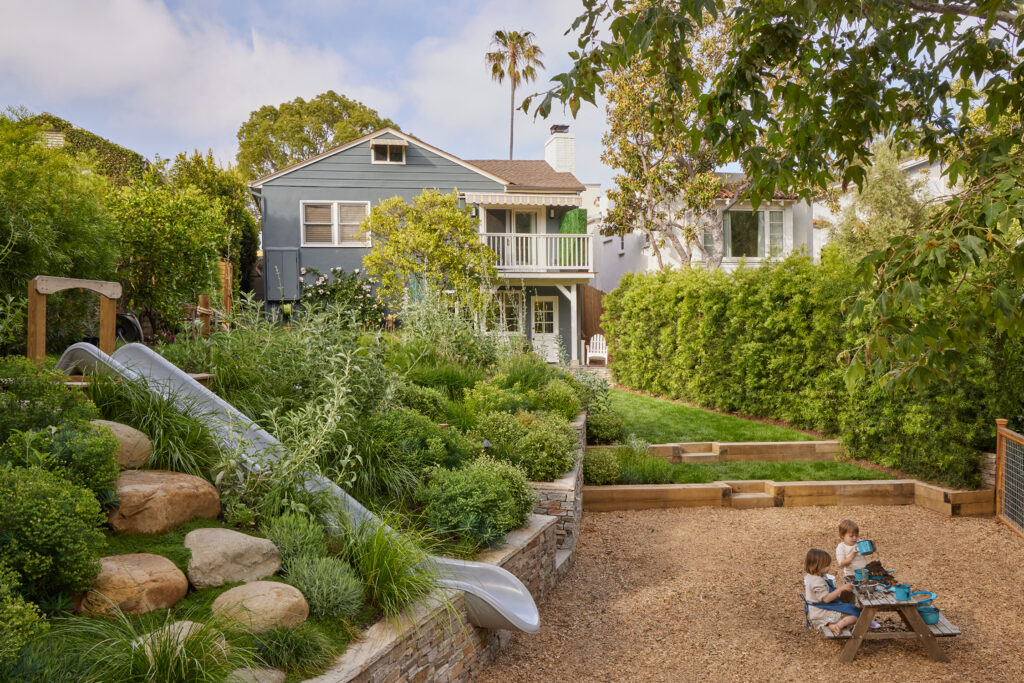
Caitlin Atkinson
2. Use Slopes to Your Advantage
Don’t think of elevation changes as a challenge. Slopes and topography of any kind can not only add visual interest, but they are also an opportunity for play. For this particular project, a wide center slope was restructured, making it an integrated element with a seamless flow from the upper and lower lawn. Here are Lu — La Studio’s tips for tackling (and creating) plant and play filled inclines in any backyard:
Make it a hillslide
It doesn’t have to be high! It can be as low as 3 feet. But it does have to be steep. A slide is set at a 50-degree slope so you will likely have to make your hill steeper to accommodate it. Holding a 50-degree slope is tricky and this is where boulders come in, which not only hold the slope in place but create challenging steps that make for a good climb.

Caitlin Atkinson
Add pathways
Depending on the steepness of your site you may need to gently orient the path in a switchback parallel to the hill to make sure you don’t scour the slope. Use stepable plants, such as thyme or sedges, that can take light foot traffic. Allow large soft textural grasses to create the boundaries of the pathway.
Planting on a slope
Planting can help retain the grade and prevent erosion. We like to use a matrix of grasses and groundcovers. Depending on the steepness, hedges and evergreens can be used at the steepest points to hold the slope and define no-go zones.
Prep
The angle of your slope can be pushed and pulled to be steeper or more gentle. Once you settle on a grade, prep your soil and install any necessary drains. While planting will hold the grades in place, adding boulders or retaining walls can also hold steep spaces. Keep height in mind when adding these structural elements so they might also be functional as resting places to sit.
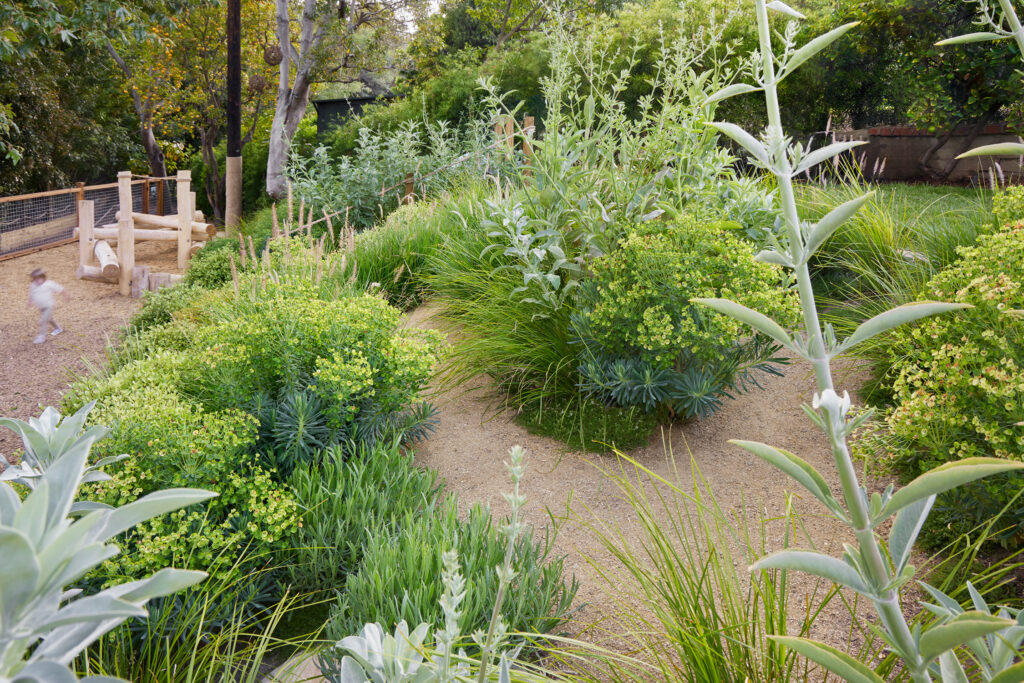
Caitlin Atkinson
3. Perfect the Plant Palette
When choosing plants for play it is important to think about how they can both create space and bring in character. The duo encourages you to think less about how plants can decorate and more how they can be experienced. And they add that they “love a secret garden, a place that feels a little overgrown with clearings of hidden spaces to explore. These spaces are both beautiful and evocative and speak to the playful spirit of both children and adults.”
For Sara and Katie, it’s not always about specific plants, it’s about how you use them to create mystery and secrets within the garden. They suggest starting with “a grass or sedge and then seed in some plants of interest. For scents and softness, think native salvias, herby perennials, and flowering shrubs.” They also note succulents, which are great for adding structure, but just make sure to choose an agave that doesn’t have teeth to keep the playing field poke-free.
A few choice plants for consideration:
- Sesleria autumnalis
- Salvia apiana, Salvia mellifera
- Stachys byzantina
- Eriogonum fasciculatum, Monardella villosa
- Agave attenuata, Calliandra californica, Diplacus puniceus
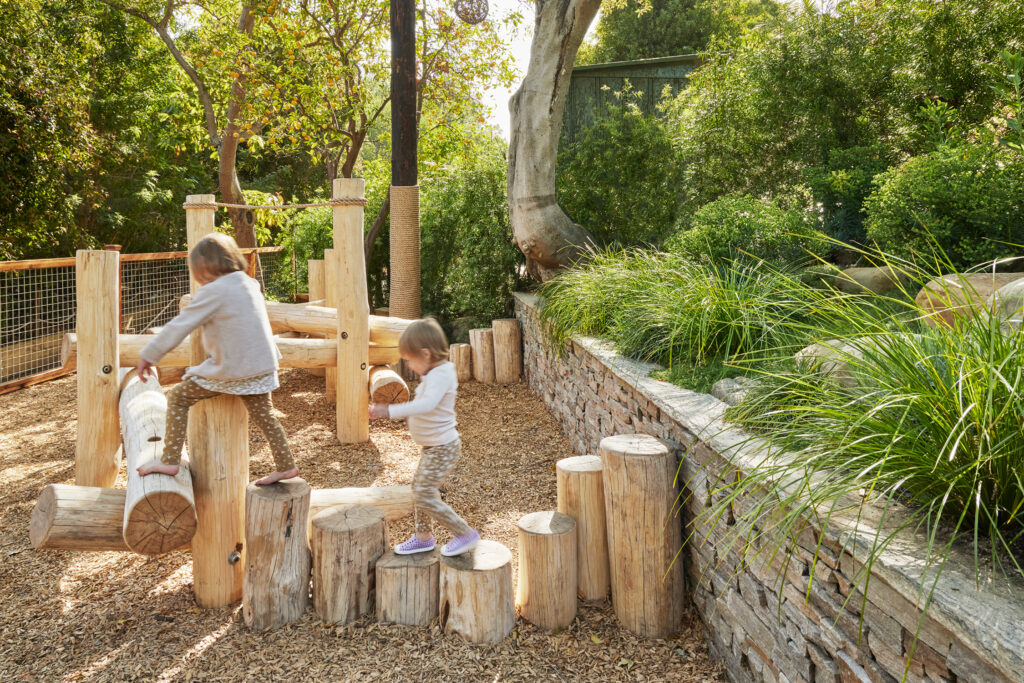
Caitlin Atkinson
4. Size Doesn’t Matter
Thinking you need an expansive plot to pull this off? Not the case! The duo encourages you to try implementing playful points no matter the backyard. “The scale of the spaces that children feel comfortable in are different from those of adults,” they say. “Scale it down, bring it in. Offer children tight spaces that make them feel held and that are clearly just for them.”
Sara and Katie add, “a good interactive play garden inspires exploration and builds on extent by offering destinations. A crop of boulders or a scramble of laying logs arranged together can be a great element for climbing, balancing, and hiding/seeking. Changing out and adding elements through the seasons will add intrigue and renew the sense of exploration.”
